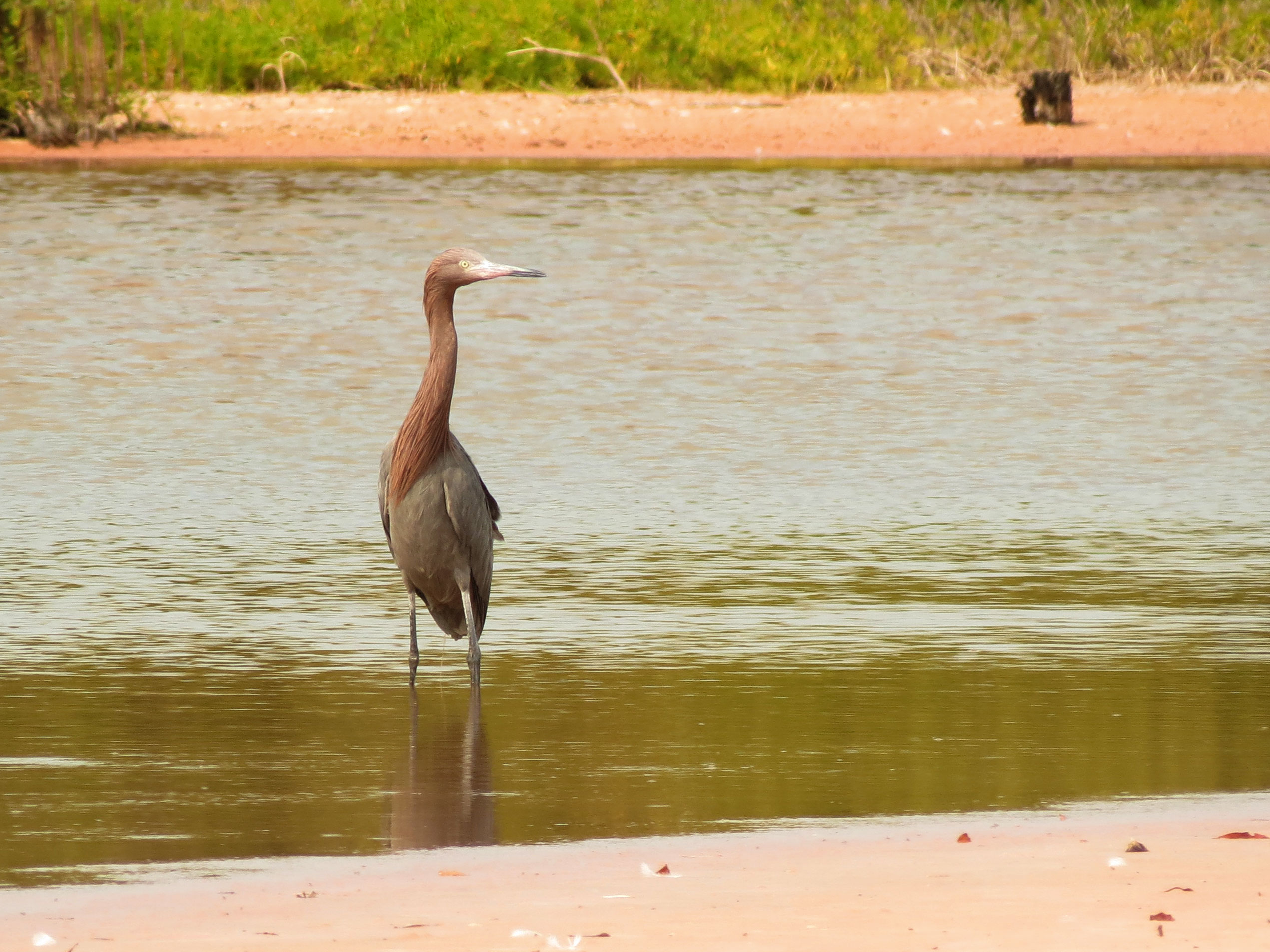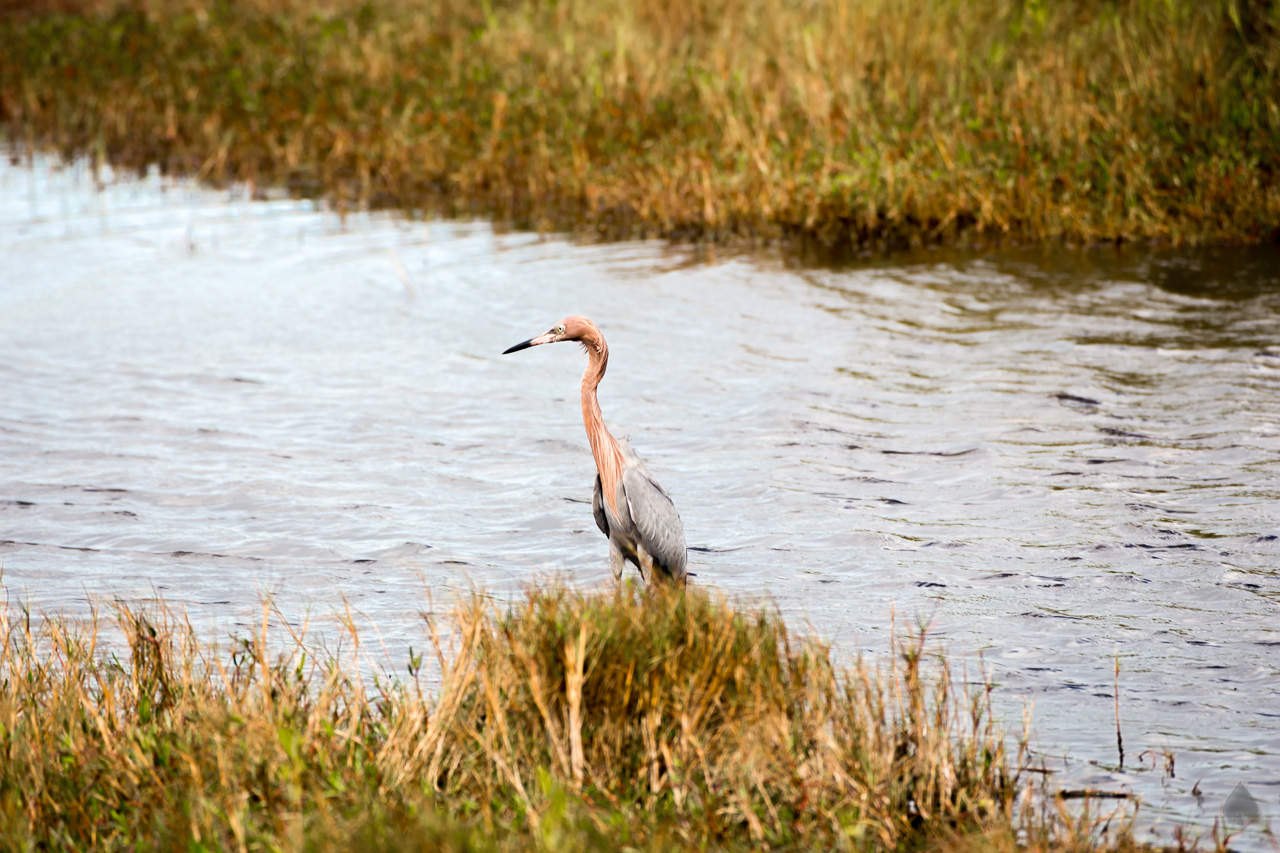Current Distribution Rangewide
Global distribution characterized by disjunct colonies occurring from the Pacific side of Northwest Mexico to the Caribbean [1]. Found on Pacific coasts in Mexico, along both coasts of Baja California, on Atlantic coasts from south Florida Alabama, Louisiana, Texas, and into Mexico. Also along coast of Yucatan Peninsula, Mexico, and north Belize, and probably Jamaica and Hispaniola, coastal Columbia and islands south of the Caribbean during the breeding season [2]. Still found in coastal areas of breeding range during the non-breeding season [2;3]. San Diego marks the northern limit of the usual range along the Pacific coast [4].
Known Populations in San Diego County
Known to occur in Los Penasquitos Lagoon, San Diego River Estuary, San Elijo Lagoon, Batiquitos Lagoon, and the Santa Margarita Estuary [4].
List Status
None.
Habitat Affinities
Strictly coastal [2]. Found in bays/sounds, herbaceous wetlands, lagoons, river mouths/tidal rivers, scrub-shrub wetlands, and tidal flats/shores [3].
Taxonomy and Genetics
Three subspecies are currently recognized: E. r. rufescens, E. r. disckeyi, and E. r. colorata. These subspecies have not been evaluated using molecular tools and appear to be weakly differentiated morphologically [2). Research indicates three evolutionarily distinct population units that support the subspecies E.r. dickeyi in Baja California and propose a new unique population within E. r. rufescens occurring in Great Inagua, Bahamas [1].
Seasonal Activity
Weakly migratory among northern portions of breeding range [5, cited in 2]. Strong southward movement from September to November [2]. Seen in San Diego County every month of the year, with its frequency peaking in October and November with the dipersal of immatures [4]. Both adults and juveniles are crepuscular and dirurnal [3].
Life History/Reproduction
Generally solitary, though often near other foraging herons [6 cited in 3, 4]. Nesting occurs primarily from March through June. Clutch size usually 3 to 4 eggs [2;7]. Estimated incubation period of 25 to 26 days [7]. Colonial breeders [3]. Young are semiprecocial [2]. Although known to live at least 11 years, 3 months, juvenile/adult survivorship is unknown [8, cited in 3].
Diet and Foraging
Forages in shallow coastal flats, ponds and lagoons including wind-tidal flats and alluvial overwash zones of barrier islands, open banks and ponds inside keys, intertidal flats, salterns, occasionally open beaches and reefs and in hypersaline flats and solar salt ponds [9]. Primarily feeds on small fish, crustaceans, and insects [2;8, cited in 3]. Possess the most active feeding methods, which include openwing, canopy feeding, foot-stirring, hovering-stirring, and stand and wait [2;10].
Dispersal
Year-round resident in some portions of its range, predominantly in the Southeastern United States [1] but migratory elsewhere. Postnesting dispersal occurs soon after immature independence [2]. Young may leave nests at about 4 weeks but incapable of sustained flight until 6 to 7 weeks of age [11]. Most movement occurs along coastlines [2].
Threats
Primarily threatened by habitat shifting and alteration from sea-level rise and subsidence, coastal engineering and development, and urban development [9].
Literature Sources
[1] Hill, A., C. Green and E. Palacios. 2012. Genetic Diversity and Population Structure of North America’s Rarest Heron, the Reddish Egret (Egretta rufescens). Conservation Genetics 13(2): 535-543.
[2] Lowther, P. E. and R. T. Paul. 2002. Reddish Egret (Egretta rufescens), version 2.0. In The Birds of North America (P. G. Rodewald, editor). Cornell Lab of Ornithology, Ithaca, New York, USA. Available: https://birdsna.org/Species-Account/bna/species/redegr/introduction. Accessed October 15, 2017.
[3] NatureServe. 2017. NatureServe Explorer: An Online Encyclopedia of Life [Web Application]. Version 7.1.NatureServe, Arlington, Virginia. Available: http://explorer.natureserve.org. Accessed: November 01, 2017.
[4] Unitt, P. 2004. San Diego County Bird Atlas. San Diego, CA. San Diego Natural History Museum.Â
[5] Cooke, Wells Woodbridge. 1913. Distribution and Migration of North American Herons and their Allies. US Dept of Agriculture Biological Survey 45.
[6] Stiles, F. Gary, and Alexander Frank Skutch. 1989. Guide to the birds of Costa Rica.
[7] Texas State Parks. 2017. Available: https://tpwd.texas.gov/huntwild/wild/species/reddishegret/. Accessed: October 31, 2017.
[8] Paul, R. T. 1991. Status Report–Egretta rufescens (GMELIN) Reddish Egret. US Fish and Wildlife Service, Houston, TX.
[9] Wilson, T. E., J. Wheeler, M. C. Green, and E. Palacios. (eds.). 2012. Reddish Egret Conservation Action Plan. Reddish Egret Conservation Planning Workshop, October 2012. Corpus Christi, TX.
[10] Rodgers Jr, J. A. 1983. Foraging Behavior of Seven Species of Herons in Tampa Bay, Florida. Colonial Waterbird, 11-23.
[11] Kaufmann, K. 2016. Reddish Egret. Available: www.audubon.org/field-guide/bird/reddish-egret. Accessed: October 15, 2017.

